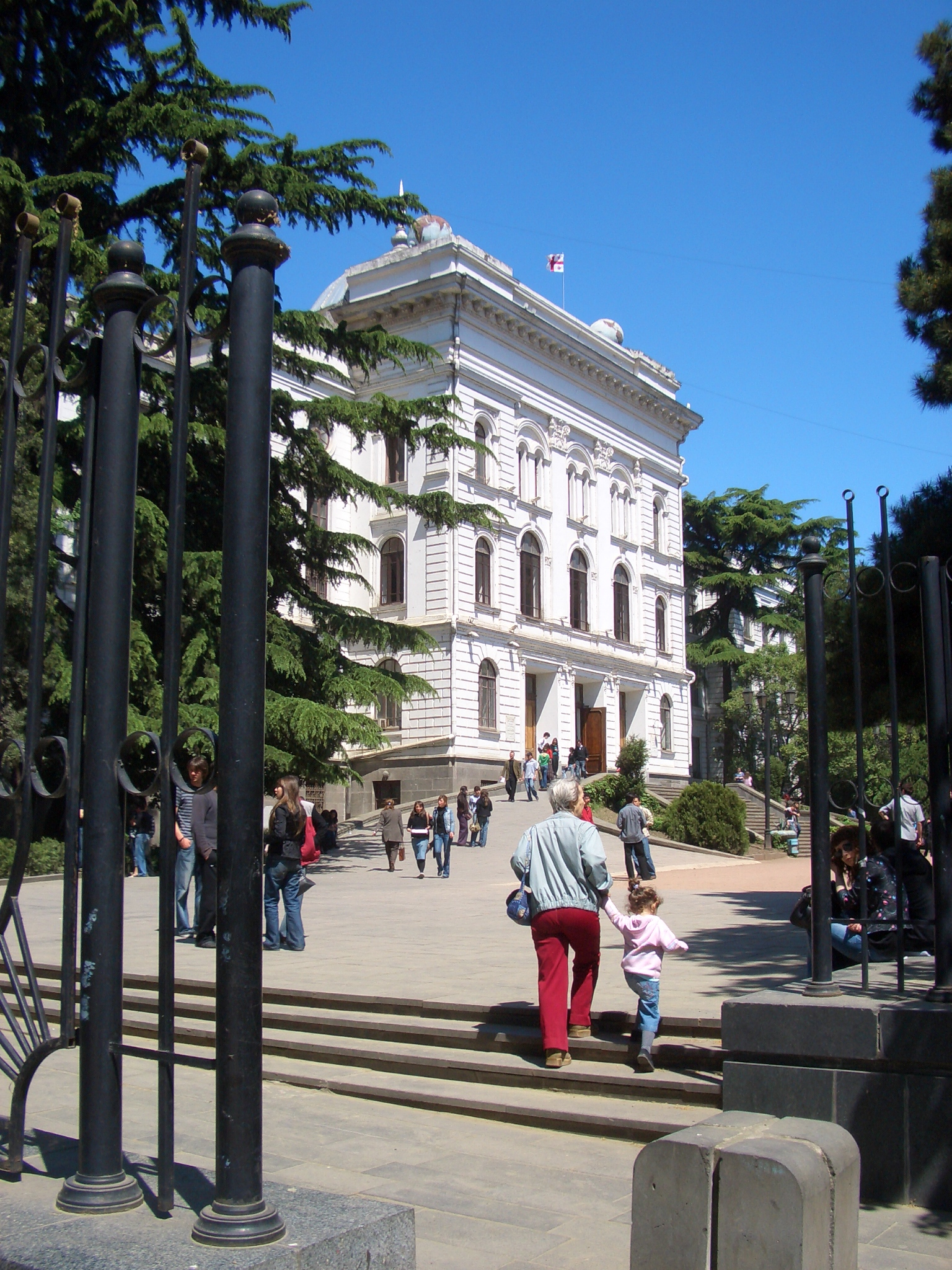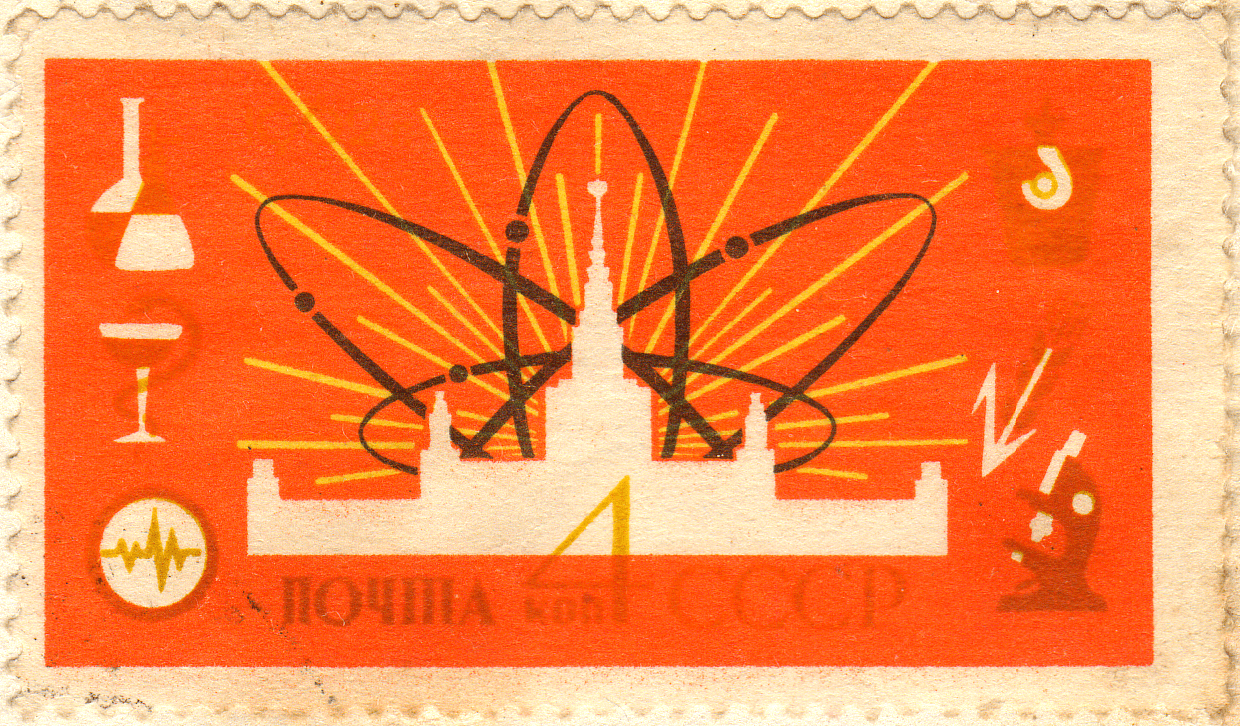|
Mkrtich Gardashian
Mkrtich Martirosovich Gardashian (; 1894 — 1938) was a Soviet medic and statesman. People's Commissar of Public Health of the Armenian SSR in 1928—1931, Director of Rostov State Medical University in 1935—1937. Biography Mkrtich Martirosovich Gardashian was born in 1894. In 1916 he graduated from the Nersesianov Theological Seminary in Tiflis. In 1917 he enrolled first at the Medical Faculty of the University of Tiflis, then moved to study at the Medical Faculty of Moscow University, which he graduated in 1922. In 1931-1932 he studied in Moscow at the Natural Faculty of Institute of Red Professors, but it was closed before Gardashian had managed to finish his study there. He was a hospital intern and clinical assistant at the Moscow Botkin Hospital (1925—1928). People's Commissar of Public Health of the Armenian SSR (1928—1931); Senior Research Associate in Surgery at the Moscow Regional Clinical Institute (1932—1935); Associate Professor of the Department of Fa ... [...More Info...] [...Related Items...] OR: [Wikipedia] [Google] [Baidu] |
Medic
A medic is a person trained to provide medical care, encompassing a wide range of individuals involved in the diagnosis, treatment, and management of health conditions. The term can refer to fully qualified medical practitioners, such as physicians, as well as individuals in training, such as medical students. It also includes emergency medical responders, such as paramedics and combat medics, who provide urgent care in pre-hospital or battlefield settings. Types The following individuals and positions are considered medics in many jurisdictions: * Emergency physician – A medical doctor (MD or DO) who has undergone specialized postgraduate training in emergency medicine. These professionals work in emergency departments worldwide, providing rapid diagnosis and treatment of acute illnesses and injuries. * Physician – Physicians, especially those involved in hospitals or urgent care, are often considered medics. In countries such as the United Kingdom, the term "medic" is ... [...More Info...] [...Related Items...] OR: [Wikipedia] [Google] [Baidu] |
Soviet
The Union of Soviet Socialist Republics. (USSR), commonly known as the Soviet Union, was a List of former transcontinental countries#Since 1700, transcontinental country that spanned much of Eurasia from 1922 until Dissolution of the Soviet Union, it dissolved in 1991. During its existence, it was the list of countries and dependencies by area, largest country by area, extending across Time in Russia, eleven time zones and sharing Geography of the Soviet Union#Borders and neighbors, borders with twelve countries, and the List of countries and dependencies by population, third-most populous country. An overall successor to the Russian Empire, it was nominally organized as a federal union of Republics of the Soviet Union, national republics, the largest and most populous of which was the Russian SFSR. In practice, Government of the Soviet Union, its government and Economy of the Soviet Union, economy were Soviet-type economic planning, highly centralized. As a one-party state go ... [...More Info...] [...Related Items...] OR: [Wikipedia] [Google] [Baidu] |
People's Commissar
Commissar (or sometimes ''Kommissar'') is an English language, English transliteration of the Russian language, Russian (''komissar''), which means 'commissary'. In English, the transliteration ''commissar'' often refers specifically to the political commissars of Soviet Union, Soviet and Eastern-bloc armies or to the people's commissars (effectively minister (government), government ministers), while administrative officers are called ''commissaries''. The Russian word комисса́р, from French ''commissaire'', was used in Russia for both political and administrative officials. The title has been used in the Soviet Union and in Russia since the time of the emperor Peter the Great (). History In the 18th and 19th centuries in the Russian army ''kommissars'', then ''krigs-komissars'' (from 'war') were officials in charge of supply for the armed forces (see Rus. :ru:Генерал-кригскомиссар, Генерал-кригскомиссар). Commissaries were ... [...More Info...] [...Related Items...] OR: [Wikipedia] [Google] [Baidu] |
Armenian SSR
The Armenian Soviet Socialist Republic (ArSSR), also known as Soviet Armenia, or simply Armenia, was one of the constituent republics of the Soviet Union, located in the Caucasus region of Eurasia. Soviet Armenia bordered the Soviet republics of Azerbaijan and Georgia and the independent states of Iran and Turkey. The capital of the republic was Yerevan and it contained thirty-seven districts (raions). Other major cities in the Armenian SSR included Leninakan, Kirovakan, Hrazdan, Etchmiadzin, and Kapan. The republic was governed by Communist Party of Armenia, a republican branch of the Communist Party of the Soviet Union. Soviet Armenia was established on 29 November 1920, with the Sovietisation of the short-lived First Republic of Armenia. Consequently, it has been referred to as the Second Republic of Armenia. It became part of the Transcaucasian SFSR (TSFSR), along with neighboring Georgia and Azerbaijan, which comprised one of the four founding republics of the U ... [...More Info...] [...Related Items...] OR: [Wikipedia] [Google] [Baidu] |
Rostov State Medical University
Rostov State Medical University (Ростовский Государственный Медицинский Университет in Russian) is a Russian public university of higher professional education of The Ministry of Health and Social Medicine. Rostov State Medical University is also known as Rostov State Medical Institute, RostSMU, RostGMU, Rostov State Government Medical University. History In 1915, the Division of Medicine at the Russian Warsaw University was moved to Rostov-on-Don, and that gave rise to the present-day Rostov State Medical University. It was initially formed as a department and later transformed into a medical institute in 1930. In 1994, the Rostov Medical Institute, at the time the largest basic training, research, and treatment center in southern Russia, was renamed the Rostov Medical University. Description The college trains 5000–7000 students annually for the Doctor of Medicine program. Each year, more than 650 people are trained in interns ... [...More Info...] [...Related Items...] OR: [Wikipedia] [Google] [Baidu] |
Tiflis
Tbilisi ( ; ka, თბილისი, ), in some languages still known by its pre-1936 name Tiflis ( ), ( ka, ტფილისი, tr ) is the Capital city, capital and List of cities and towns in Georgia (country), largest city of Georgia (country), Georgia, located on the banks of the Kura (Caspian Sea), Kura River. With around 1.2 million inhabitants, it contains almost one third of the country's population. Tbilisi was founded in the fifth century Anno Domini, AD by Vakhtang I of Iberia and has since served as the capital of various Georgian kingdoms and republics. Between 1801 and 1917, then part of the Russian Empire, it was the seat of the Caucasus Viceroyalty (1801–1917), Caucasus Viceroyalty, governing both the North Caucasus, northern and the South Caucasus, southern sides of the Caucasus. Because of its location at the crossroads between Europe and Asia, and its proximity to the lucrative Silk Road, throughout history, Tbilisi has been a point of contention ... [...More Info...] [...Related Items...] OR: [Wikipedia] [Google] [Baidu] |
Tbilisi State University
Ivane Javakhishvili Tbilisi State University ( ka, ივანე ჯავახიშვილის სახელობის თბილისის სახელმწიფო უნივერსიტეტი, tr; often shortened to its historical name, Tbilisi State University or TSU) is a public research university established on 8 February 1918 in Tbilisi, Georgia. Excluding academies and theological seminaries, which have intermittently functioned in Georgia for centuries, TSU is the oldest university in Georgia and the Caucasus region. The total enrollment is over 23,500 students, and there are 5,000 faculty and staff members (collaborators) overall. The main founder of the university was a Georgian historian and academician, Ivane Javakhishvili. Among the co-founders were also several scientists, including Giorgi Akhvlediani, Shalva Nutsubidze, Dimitri Uznadze, Grigol Tsereteli, Akaki Shanidze, Andrea Razmadze, Korneli Kekelidze, Ioseb Kipshidze, P ... [...More Info...] [...Related Items...] OR: [Wikipedia] [Google] [Baidu] |
Moscow University
Moscow State University (MSU), officially M. V. Lomonosov Moscow State University,. is a public research university in Moscow, Russia. The university includes 15 research institutes, 43 faculties, more than 300 departments, and six branches. Alumni of the university include past leaders of the Soviet Union and other governments. As of 2019, 13 Nobel laureates, six Fields Medal winners, and one Turing Award winner were affiliated with the university. History Imperial Moscow University Ivan Shuvalov and Mikhail Lomonosov promoted the idea of a university in Moscow, and Russian Empress Elizabeth decreed its establishment on . The first lectures were given on . Saint Petersburg State University and MSU each claim to be Russia's oldest university. Though Moscow State University was founded in 1755, St. Petersburg which has had a continuous existence as a "university" since 1819 sees itself as the successor of an academy established on in 1724, by a decree of Peter the Great ... [...More Info...] [...Related Items...] OR: [Wikipedia] [Google] [Baidu] |
Institute Of Red Professors
The Institute of Red Professors of the All-Union Communist Party (Bolsheviks) () was an institute of graduate-level education in the Marxist social sciences located in the Orthodox Convent of the Passion, Moscow. History It was founded in February 1921 to address a shortage of Marxist professors but only about 25 percent of its graduates continued an academic career; most rather became functionaries of the Communist Party. At first it was under the jurisdiction of the Central Executive Committee of the Soviet Union and later under the Department for Agitation and Propaganda (Agitprop). The studies lasted four years and students (nicknamed ''ikapisty'') were required to write research papers, which were often published and represented a significant body of Marxist historical research. Two hundred thirty-six students completed the course between 1924 and 1929. In 1929, there were 69 teachers at the institute, seven of whom were not members of the Communist Party. Its rectors were Mik ... [...More Info...] [...Related Items...] OR: [Wikipedia] [Google] [Baidu] |
RSDLP(b)
The Communist Party of the Soviet Union (CPSU),. Abbreviated in Russian as КПСС, ''KPSS''. at some points known as the Russian Communist Party (RCP), All-Union Communist Party and Bolshevik Party, and sometimes referred to as the Soviet Communist Party (SCP), was the founding and ruling political party of the Soviet Union. The CPSU was the sole governing party of the Soviet Union until 1990 when the Congress of People's Deputies modified Article 6 of the 1977 Soviet Constitution, which had previously granted the CPSU a monopoly over the political system. The party's main ideology was Marxism–Leninism. The party was outlawed under Russian President Boris Yeltsin's decree on 6 November 1991, citing the 1991 Soviet coup attempt as a reason. The party started in 1898 as part of the Russian Social Democratic Labour Party. In 1903, that party split into a Menshevik ("minority") and Bolshevik ("majority") faction; the latter, led by Vladimir Lenin, is the direct ancestor of ... [...More Info...] [...Related Items...] OR: [Wikipedia] [Google] [Baidu] |
XV Congress Of The All-Union Communist Party (Bolsheviks)
The 15th Congress of the All-Union Communist Party (Bolsheviks) was held during 2–19 December 1927 in Moscow. It was attended by 898 delegates with a casting vote and 771 with a consultative vote. The congress ended an inner-party struggle, as Leon Trotsky, Gregorii Zinoviev and other opponents of Joseph Stalin were expelled from the party. History Background In October 1927, the last Left Opposition members were expelled from the Central Committee elected by the 14th Congress, and in November 1927 Leon Trotsky and Grigory Zinoviev were expelled from the Party itself. Repudiation of the United Opposition The 15th Congress of the All-Union Communist Party (Bolsheviks) was convened in Moscow on 2 December 1927. This marked the first Soviet Communist Party Congress in two years, this despite the fact that party regulations called for annual meetings.Moshe Lewin, ''Russian Peasants and Soviet Power: A Study of Collectivization.'' London: George Allen and Unwin, 1968; p. 198. T ... [...More Info...] [...Related Items...] OR: [Wikipedia] [Google] [Baidu] |



